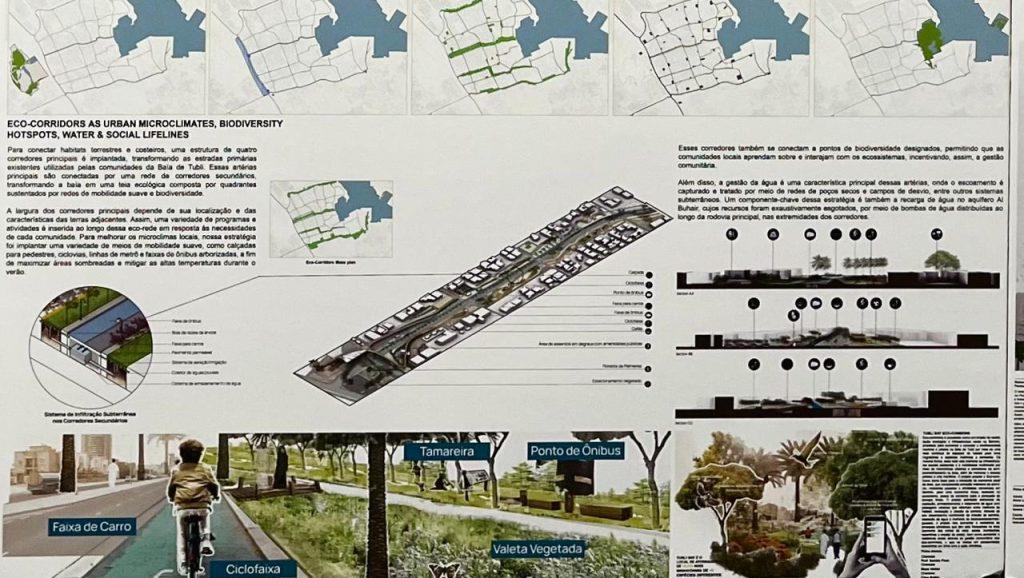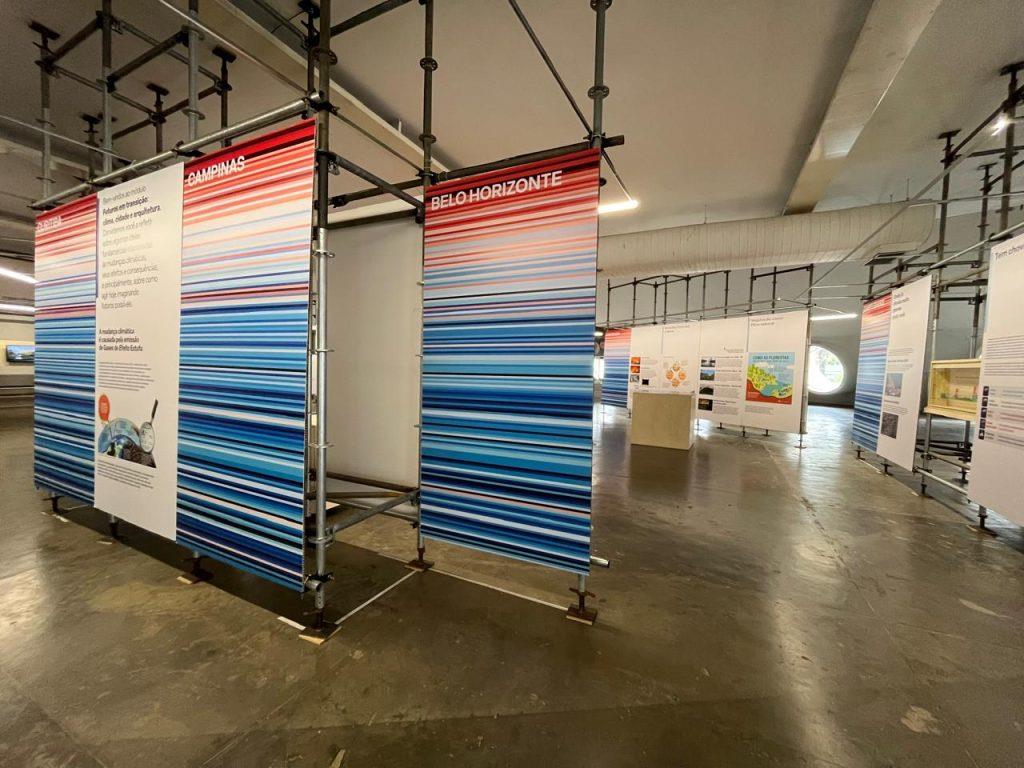Lebanon Project At São Paulo Architecture Biennale

Lebanese project for Bahran featured in São Paulo Architecture Biennale Schools Competition
Developed by students from the School of Architecture and Design at the American University of Beirut, the project Eco Commons: Seeding Urban Biodiversity for Climate and Social Resilience in Tubli Bay, Bahrain proposes the rehabilitation of Tubli Bay, located south of Bahrain's capital Manama. The area once sustained local communities through fishing, but today its terrestrial and marine habitats are under threat.
The project proposes a linear park, typically a green area longer than it is wide, bordered by a watercourse. This linear park, designed for Bahrain, provides public access to the bay's shoreline, integrates with the region's urban mobility, and ensures a shaded microclimate for the birds living there. It was developed by Lebanese undergraduate students Maya Haïdar and Clara Saliba, under the guidance of Sandra Frem.
This is one of 30 projects developed for the Schools Competition, part of the exhibition program, alongside 179 other works submitted by invitation and through an open call. The projects not only offer ways for environments to better withstand heat but also reflect on reducing greenhouse gas emissions in buildings and propose solutions for cities and regions to adapt to-and even mitigate-extreme climates.
An example is the concept of sponge cities, developed by Chinese architect Kongjian Yu, which, among other measures, proposes adapting cities to be floodable and capable of retaining rainwater. Kongjian passed away on September 23 in a plane crash in the Pantanal region of Brazil's Mato Grosso do Sul state.

Panels reflect extreme temperatures
A common theme across most projects is water. The Architecture Biennale highlights the challenge of water, whether in excess through flooding or in scarcity, as curator Renato Anelli told ANBA.“Water is central to survival, as global warming alters precipitation patterns,” he said.
Anelli also noted that some initiatives aimed at rehabilitating environments through water use employ the concept of a linear park as a solution.“What we observed, especially in the open call and the Schools Competition, is that several other countries are working on techniques similar to those used in Brazil, and it was a pleasant surprise for us to see the work from the Lebanese school applying principles similar to what we've been implementing here. The issue of water and its relationship with vegetated banks is an international concern,” he said.
Extreme temperatures in focusThe exhibition also addresses rising temperatures and their causes beyond water-related issues. One of the works consists of multiple panels with“warming stripes” that transition from blue (lower temperatures) to red (higher temperatures). Each panel represents a city in Brazil: Recife, Pernambuco; Porto Alegre, Rio Grande do Sul; Cuiabá, Mato Grosso, Contagem, Minas Gerais; and Guarulhos, São Paulo, among others. The panels illustrate that temperatures in all these cities are increasing year after year. Alongside them are additional panels explaining heat distribution processes, their causes, and consequences.
The exhibition is organized around five thematic axes: preserving forests and reforesting cities; living with water; renovating more and building green; moving and accessing together with renewable energy; and ensuring climate justice and social housing. These themes are explored through models, conceptual projects-both in form and materials-and displays of various explanatory banners, including the Lebanese project. All aim to provide solutions to a shared challenge: extreme climate.
The São Paulo International Architecture Biennale is free to attend and runs until October 19. Check the full program here .
Read more:
Arab art shines at São Paulo Biennial
Translated by Guilherme Miranda
Marcos Carrieri/ANBAMarcos Carrieri/ANBAMarcos Carrieri/ANBAThe post Lebanon project at São Paulo Architecture Biennale appeared first on ANBA News Agency .
.jpg)
Legal Disclaimer:
MENAFN provides the
information “as is” without warranty of any kind. We do not accept
any responsibility or liability for the accuracy, content, images,
videos, licenses, completeness, legality, or reliability of the information
contained in this article. If you have any complaints or copyright
issues related to this article, kindly contact the provider above.
Most popular stories
Market Research

- Seoul Exchange, One Of Only Two Licensed Platforms For Unlisted Securities, Will Exclusively Use Story To Settle Tokenized Rwas
- Phase 6 Reaches 50% Mark As Mutuum Finance (MUTM) Approaches Next Price Step
- 0G Labs Launches Aristotle Mainnet With Largest Day-One Ecosystem For Decentralized AI
- Solotto Launches As Solana's First-Ever Community-Powered On-Chain Lottery
- Kintsu Launches Shype On Hyperliquid
- Blockchainfx Raises $7.24M In Presale As First Multi-Asset Super App Connecting Crypto, Stocks, And Forex Goes Live In Beta




















Comments
No comment